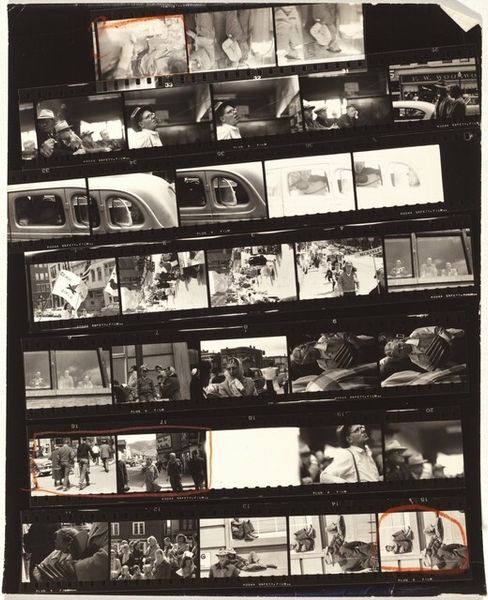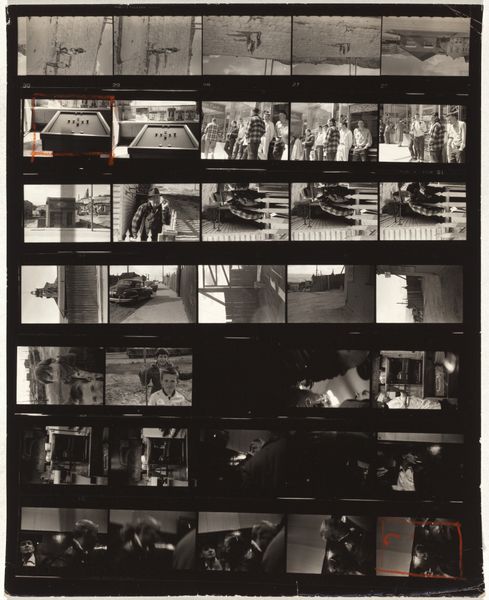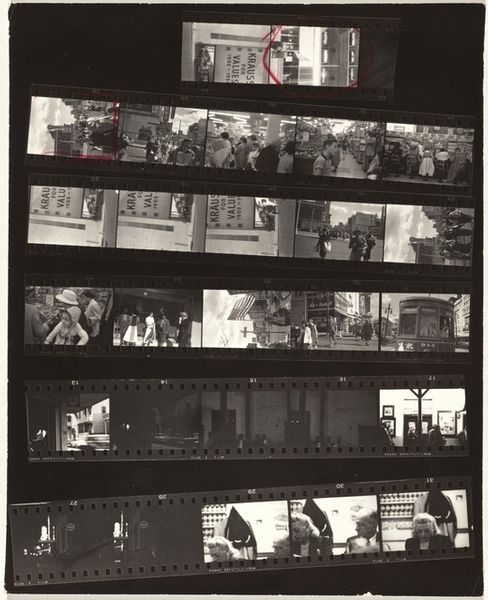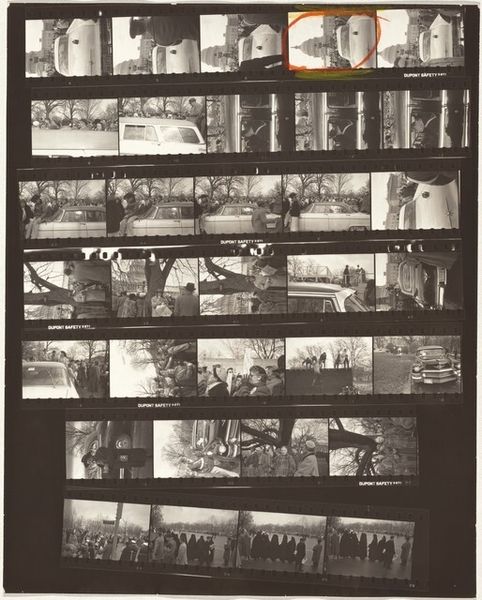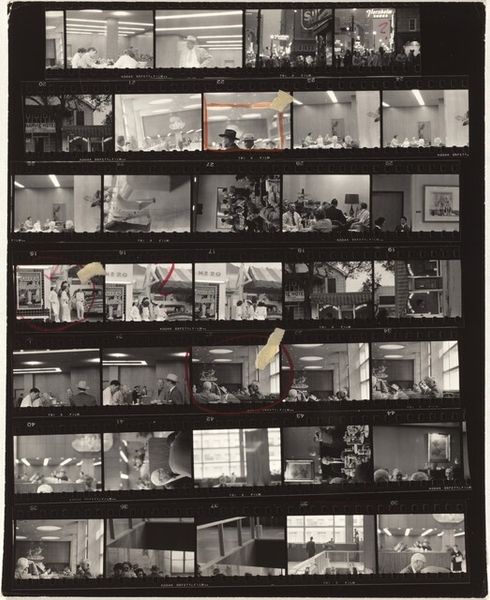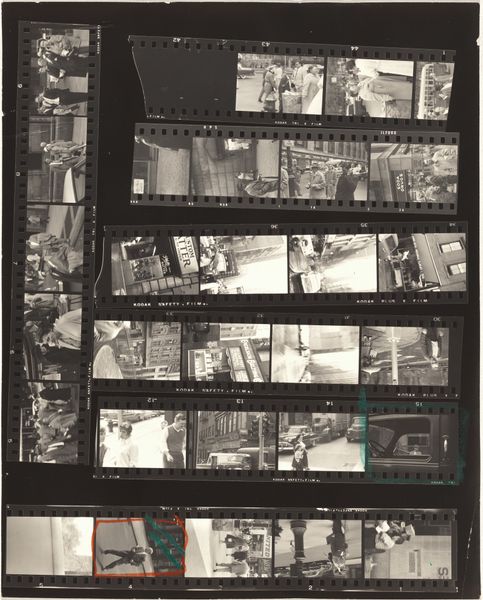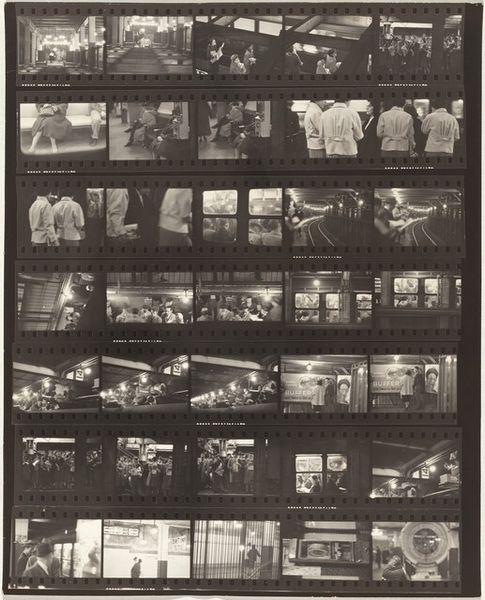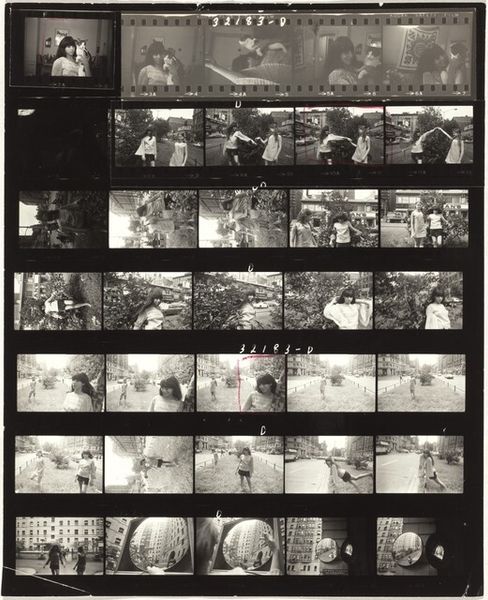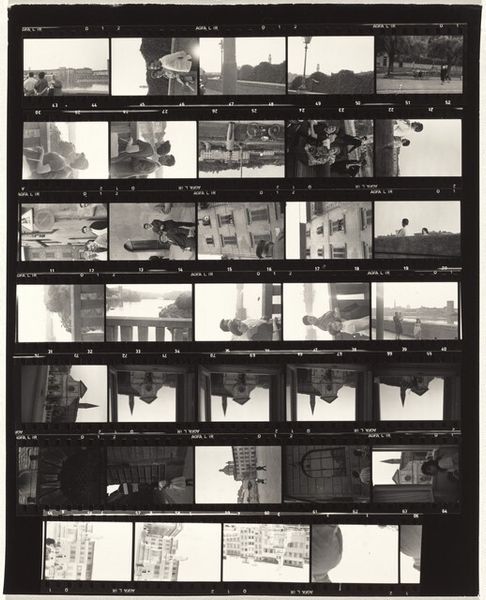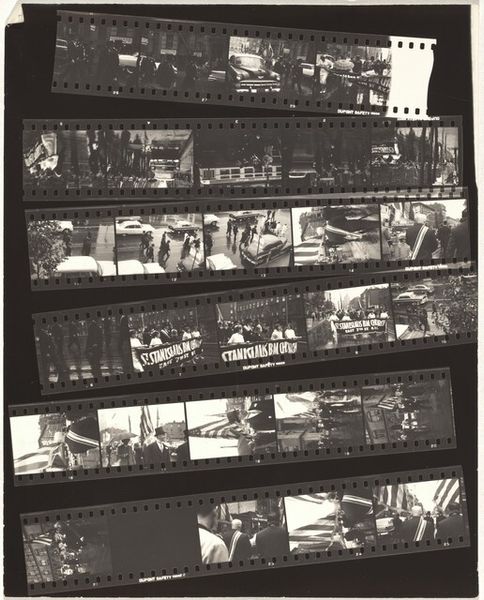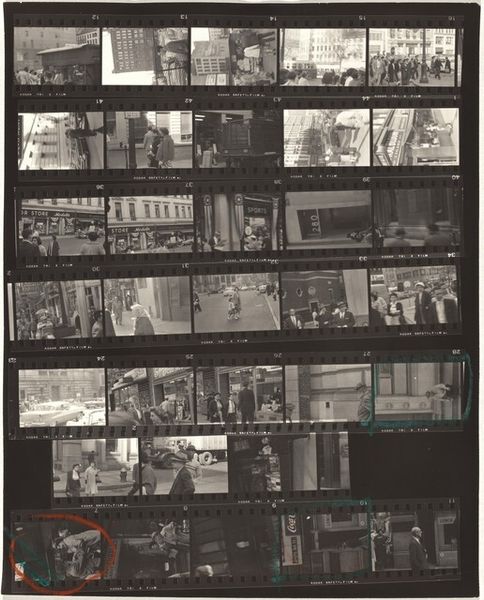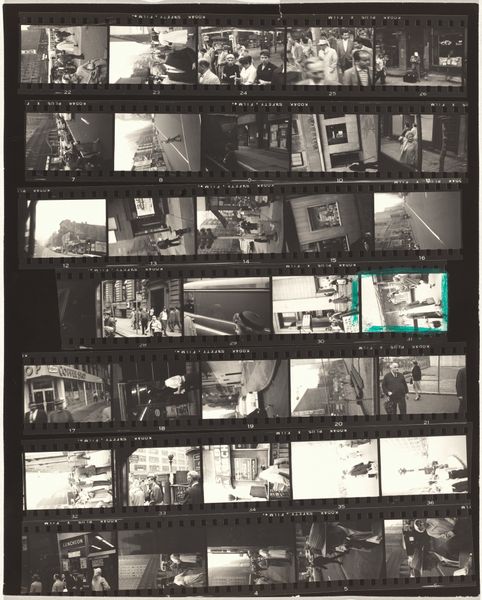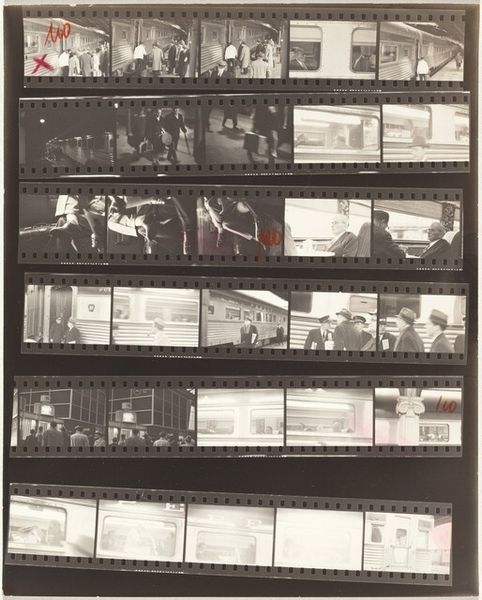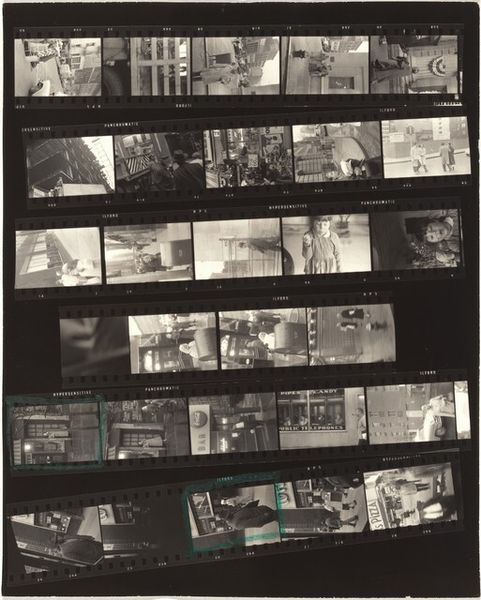
photography, gelatin-silver-print
#
portrait
#
film photography
#
landscape
#
street-photography
#
photography
#
group-portraits
#
gelatin-silver-print
#
modernism
Dimensions: overall: 25.3 x 20.4 cm (9 15/16 x 8 1/16 in.)
Copyright: National Gallery of Art: CC0 1.0
Editor: Here we have Robert Frank’s "Guggenheim 599—San Francisco", a gelatin silver print from around 1956. It’s a series of street photography frames arranged in strips like film negatives. There’s something gritty yet glamorous about it, snapshots of people in moments of leisure. How do you interpret the historical significance of this piece? Curator: Frank's work, especially from "The Americans," really challenged the idealized image of America perpetuated at the time. The inclusion of the entire contact sheet transforms the final photograph to suggest that its message goes beyond any single image. How do you view these types of "chance" photographs within the political milieu of post-war America? Editor: I think the raw quality and ordinary subjects point to a shift away from staged portrayals of American life toward a more honest, albeit complex, reflection of the population. What did it mean for Frank to turn the camera to a scene instead of asking it to pose? Curator: Exactly. This "slice of life" aesthetic, popularized at midcentury, democratizes the art form. This ethos of documentary photography positioned art as a platform for witnessing a wider array of cultural narratives. How does understanding the politics of imagery inform your reading of photographs? Editor: Thinking about photography this way is like opening a whole new world to the stories these images tell beyond their surface appearance. This piece certainly makes me consider the choices behind even the most seemingly candid snapshots. Curator: And those choices ultimately reveal the cultural anxieties and power dynamics that shaped American society, then and now. Seeing those echoes across time makes it easier to evaluate visual messages around us.
Comments
No comments
Be the first to comment and join the conversation on the ultimate creative platform.
